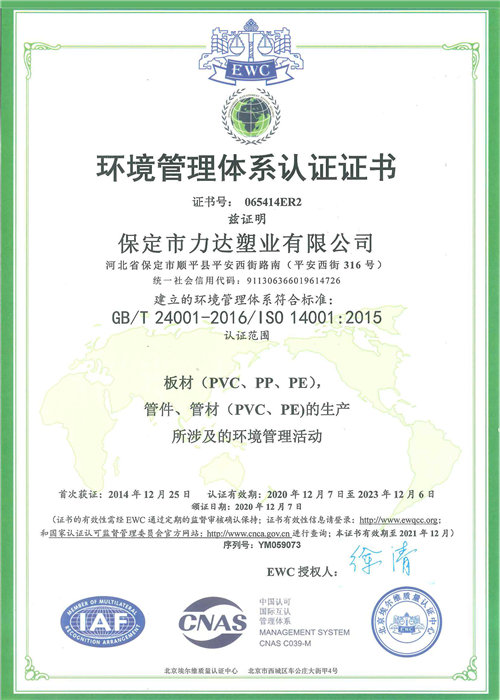Dic . 13, 2024 01:30 Back to list
hdpe sheet density
Understanding the Density of HDPE Sheets
High-Density Polyethylene (HDPE) is one of the most widely used plastics in the world, known for its strength, durability, and versatility. As a thermoplastic polymer produced from the polymerization of ethylene, HDPE has become a preferred material for various applications ranging from packaging to construction. One critical characteristic of HDPE that influences its suitability for many applications is its density, typically measured in grams per cubic centimeter (g/cm³).
What is Density?
Density is defined as the mass of a substance per unit volume. It is an essential physical property that affects the performance and application of materials. For HDPE, the density ranges from approximately 0.93 to 0.97 g/cm³. This relatively low density makes HDPE a lightweight option compared to other plastics and materials. The density of HDPE plays a vital role in determining its mechanical properties, processing characteristics, and overall performance in specific applications.
Importance of Density in HDPE Sheets
HDPE sheets, due to their density, exhibit several desirable attributes. For instance, the lower density contributes to the material's lightweight nature, making HDPE sheets easy to handle and install. This feature is particularly advantageous in industries such as construction, where materials that are easier to manipulate can lead to reduced labor costs and improved efficiency.
Furthermore, the density of HDPE directly influences its strength-to-weight ratio. HDPE sheets are known for their remarkable strength despite their lightweight nature. This attribute is critical in applications such as chemical tanks, reservoirs, and industrial containers where high strength is needed to withstand various forces and stresses.
Influence of Density on Processing and Fabrication
hdpe sheet density

The density of HDPE sheets significantly impacts processing techniques. For example, in processes such as extrusion and injection molding, a consistent density ensures uniform melting and better flow characteristics, which is crucial for creating high-quality products. The processing conditions, including temperature and pressure, can be adjusted based on the density of the HDPE material being used, allowing manufacturers to optimize production processes for different applications.
Moreover, the density of HDPE sheets also affects their thermal properties. Lower density typically results in better insulation properties, making HDPE an excellent choice for applications requiring temperature regulation. This is especially true in plumbing and piping systems, where HDPE’s thermal resistance helps maintain consistent water temperatures.
Applications of HDPE Sheets
The unique properties attributed to the density of HDPE sheets have led to their widespread use in various industries. In the construction sector, HDPE sheets are used as geomembranes for liners in landfills and reservoirs due to their durability and low permeability. Moreover, they are utilized in the fabrication of signs, cutting boards, and even in the food packaging industry because of their non-toxic nature and resistance to chemicals.
In agriculture, HDPE's resistance to moisture and UV radiation makes it an excellent material for greenhouse structures and irrigation applications. The lightweight nature of HDPE sheets allows for easy installation, ensuring that farmers can maximize their productivity while minimizing effort and costs.
Conclusion
In summary, the density of HDPE sheets is a crucial factor that impacts their usability and effectiveness in various applications. With its low density, HDPE offers lightweight yet durable solutions across industries, from construction to agriculture. Understanding the importance of density in HDPE not only aids in selecting the right materials for specific needs but also highlights the advantages this versatile plastic provides. As industries continue to evolve, the role of HDPE and its properties, including density, will remain prominent in driving innovation and efficiency.
-
HDPE Natural Sheet: Durable, Food-Grade & Versatile Plastic Solutions
NewsAug.27,2025
-
Durable Glossy PVC Rigid Sheet | Premium High-Shine Panels
NewsAug.26,2025
-
Durable PP Rigid Sheet: Lightweight, Chemical Resistant Solutions
NewsAug.21,2025
-
PVC Grey Sheet for Extraction: Chemical Resistant & Durable
NewsAug.19,2025
-
Durable PVC Pipe Fittings for Plumbing & Irrigation Needs
NewsAug.18,2025
-
HDPE Steel Belt Reinforced Spiral Corrugated Pipe | High Strength
NewsAug.17,2025

